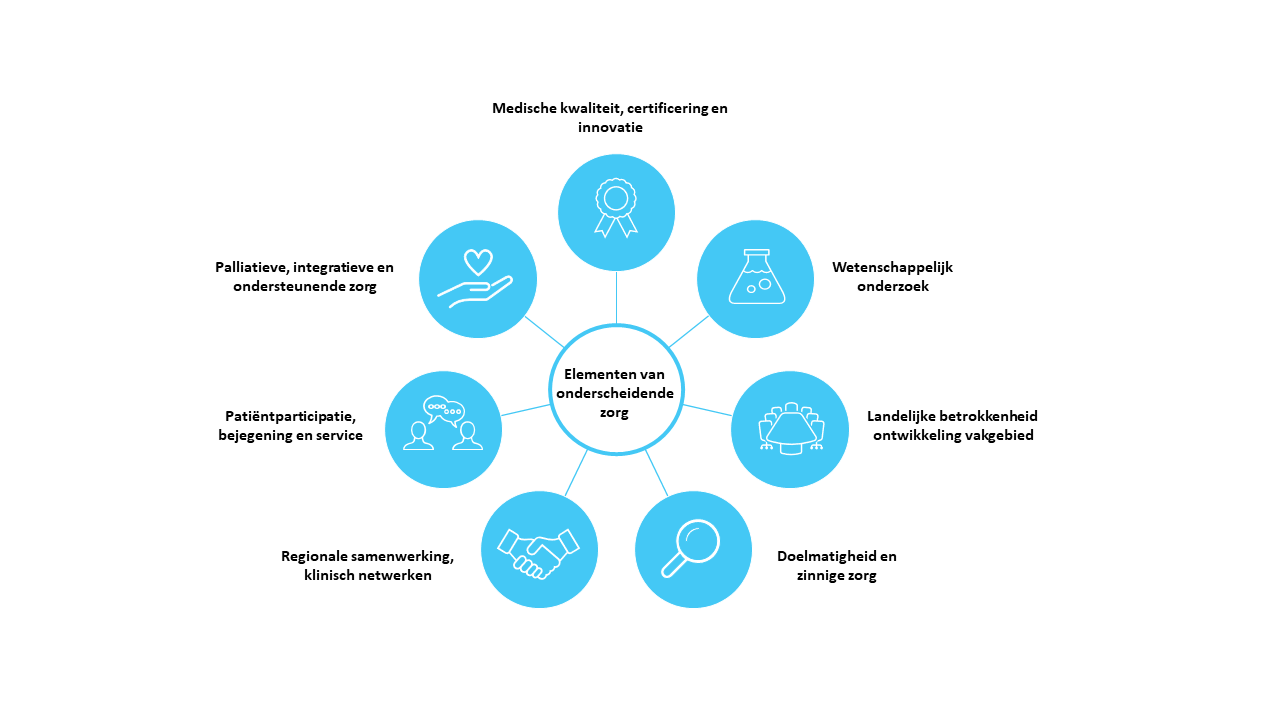Future-proof portfolio for Isala Cancer Treatment centre
Isala provides a wide range of multidisciplinary care for cancer treatment under the Isala Oncologisch centrum banner (Isala Cancer Treatment centre, IOc). Demand for cancer treatment services is rising, and new diagnostic methods and therapies are being developed at a rapid pace. These factors are squeezing capacity and demand a high level of adaptability from the professionals at the hospital. The management at Isala wants to be able to make clear choices to safeguard the provision of future-proof cancer treatment for Isala and the wider region. To help them achieve this, the IOc board enlisted Morgens in the role of process manager and advisor to healthcare professionals, directors, and managers.
Client
Isala

Market
Healthcare
Date published
23 augustus 2023

About Isala
Isala is a hospital group with five locations in Zwolle, Meppel, Steenwijk, Kampen, and Heerde. Under the motto 'close by when possible, further away when necessary', Isala provides basic and specialist care in Southwest Drenthe and Northwest Overijssel. Over the course of time, more and more specific, specialist functions have been allocated to the organization, often in recognition of the knowledge and skills the specialists at the group had already developed on their own initiative. In terms of the specialist functions it provides, which include cardiac and neurological surgery and dialysis, the Isala group can absolutely hold its own against teaching hospitals.
Question
Based on a structured approach, develop three scenarios for a future-proof portfolio that allows the specialisms within the Cancer Treatment centre to excel, and that enables Isala to adopt a prominent position nationwide.
Approach
We started by drawing up a structured roadmap to produce the three scenarios. Using workshops, we then translated Isala's strategy into the factors that would help it achieve its strategic objectives, or that might serve as an obstacle instead. We used these main strategic drivers and obstacles to devise criteria to enable us to assess the scenarios, which were yet to be drawn up, against one another.
As a next step, we started drawing up the scenarios themselves. Generating broad support was essential during this phase, as Isala wanted its eventual choice to be embraced by all specialists and their departments. As many specialists are detail-driven, we decided to pause and reflect for a moment, turning our focus to the development of an inspiring and recognisable vision instead. In doing so, it became clear that several specialists were concerned about striking the right balance between becoming a nationwide centre of excellence in cancer treatment and the responsibility they felt to keep offering a broad and accessible portfolio of cancer treatment in the region.
We addressed this dilemma during a workshop. In doing so, we reached four conclusions:
- Scenarios can be envisaged in which Isala is able to excel in the field of cancer treatment while remaining accessible for the wide target audience who, generally speaking, have no suitable alternative nearby for cancer treatment.
- There are a significant number of uncertain factors that Isala is unable to influence or unable to influence directly, but that are decisive in the achievement of its ambitious objectives.
- Not Isala itself, but the overall provision of cancer treatment in the region must serve as the guiding principle.
- Certain topics need to be addressed from a chain-wide perspective.
That brought us to an approach to be adopted for the three scenarios, which was to differentiate in terms of the diligence with which Isala could set about pursuing its own ambitions.
We differentiated between a cautious scenario, an ambitious scenario, and a highly ambitious scenario to be followed in case Isala really had the wind in its sails. The basis for each scenario was the agreement that every care chain would put in maximum effort to create room for development. On top of that, in each scenario, we incorporated room for development for collaborate healthcare supply chains that had shown themselves to have the potential to excel over the last few years, both in patient care and in the field of research and innovations. In the cautious scenario, there is space to put a maximum of two collaborative healthcare supply chains in the 'shop window', while in the highly ambitious scenario, there is room for no fewer than five or six chains, plus several chain-wide ambitions.
The trickiest factor was devising a sufficiently objective framework to assess the degree of excellence of each collaborative healthcare supply chain. After all, giving some pathways room for development would mean denying that prospect for other chains, meaning those choices had to be properly justified. To do so, we used a combination of objective data from the Isala systems, information provided by the healthcare supply chain partners themselves, and external insights, such as benchmarks and patient perspectives. The outcomes of an initial analysis were discussed in a session with representatives from each collaborative healthcare supply chain. That way, the parties involved immediately got to know one another's strong points and development plans, and we were able to enhance understanding for joint choices.

Throughout the entire process, conversations took place with representatives from each collaborative healthcare supply chain and specialist department. We took an iterative approach to these discussions, adding more and more specifics to the choices and making them more categorical. We also received critical questions, entered into dialogue, refined choices or their justification where necessary, and repeated the process. 'Broad sessions’ formed the core of our approach. During these sessions, we regularly shared, discussed, and assessed our progress with representatives from stakeholders and all parties involved. We did so to encourage all healthcare supply chain partners and specialist departments to approach the strategic challenges from a shared perspective, alongside the ideas and insights they brought to the table from their own practical settings. Eventually, we noted down all insights, considerations, proposals for implementation and the proposed decisions based thereon in an accessible report. Following a discussion of this report, all proposed decisions were embraced by the board and medical staff, and the IOc management was able to proceed straightaway with their implementation.
Result
- A thoroughly substantiated and accessibly written portfolio vision for Isala that serves as a sound basis for implementation and a key to open up dialogue with regional partners.
- Broad support and enthusiasm for the portfolio choices among a large group of medical specialists and other professionals.
- A stronger connection between collaborative healthcare supply chains and specialist departments, enabling them to get to know one another's practices and facilitating dialogue.
- Flexibility in the form of the ability to switch between the different scenarios depending on future developments.
- Gathered a large number of specific, realistic ideas for improvement and innovation.
- Achievements already accomplished and special skills were defined more explicitly, serving as a base for Isala to better profile itself externally.